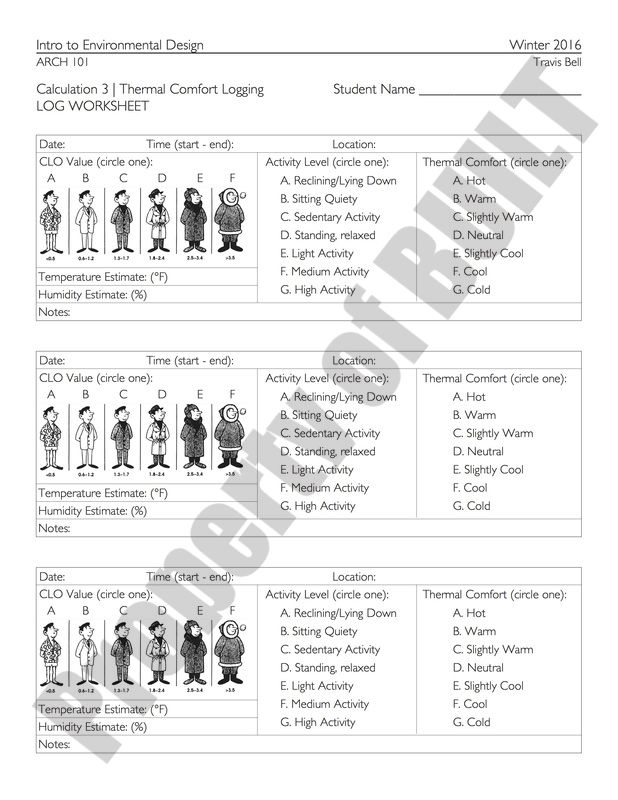THERMAL COMFORT
ARCH101 - Introduction to Environmental Design
Concepts and theories of the field of environmental and sustainable design. Includes a study of perceptual, technical, and philosophical concepts of natural and built resources through lectures, design projects, and individual projects.
Activity
Students, as individuals, participate in a thermal comfort activity in which they carry around personal temperature/humidity data loggers for two weeks. During this time, while they are in a location for an extended amount of time (i.e. in a classroom during a lecture, in the library while working on homework, in a gym while exercising, etc.) the students record the date, time, and location, and their CLO value and physical activity level. Then, they rate their thermal comfort and estimate the temperature and humidity of the space in which they are during the time. After the end of the two weeks, the students take the temperature/humidity data off of their data loggers (which are set to record and log data for the duration of the two weeks) and use their worksheets to find the actual temperature/humidity of the recordings they made. This hands-on activity gives first-year architecture students knowledge of how human thermal comfort is affected by a number of factors and thus the realization of the complex role thermal comfort plays in architectural design.
If you wish to conduct the below activity and for full resolution PDFs and editable documents of the above worksheets, please contact BUILT. The sheets are free and available to anyone, we just ask for your contacting so that we may keep track of the extent and range of our outreach.







